Mumbai
Bombay (or Mumbai) is the most modern and European city in India. In the center — beauty.

Expensive shops.

On the roads and sidewalks — tiles, and most buildings — colonial Victorian architecture, executed in a special, Indian style.

Victoria Station. No matter how much they try to call this beautiful building by the new name of Chhatrapati Shivaji Terminus, it is obvious that only the English could have built such a magnificent complex. With great generosity, the British developed their former colony: although the station is built in their beloved Victorian style, it also clearly reflects an Indian motif.

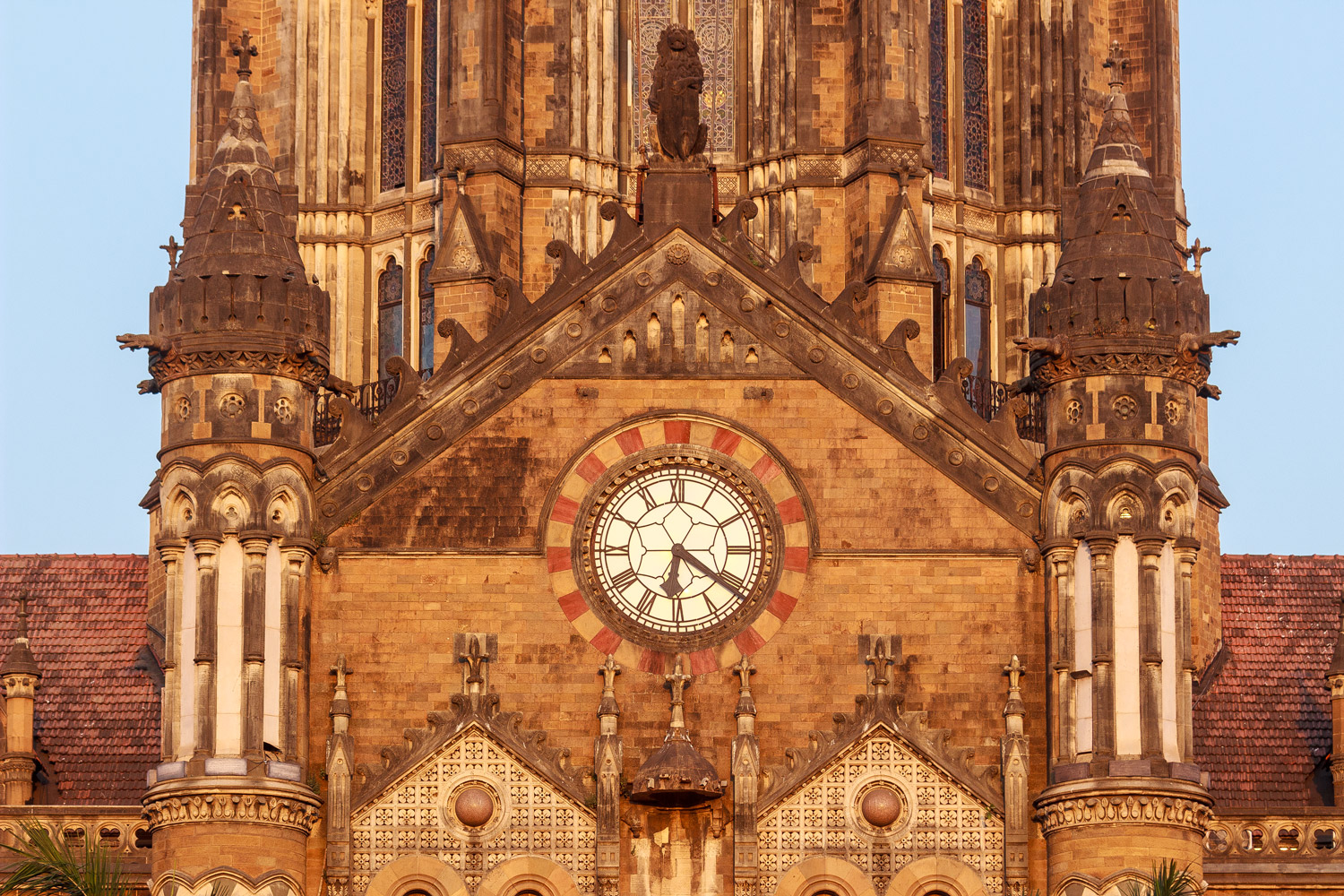
Municipality of Bombay.
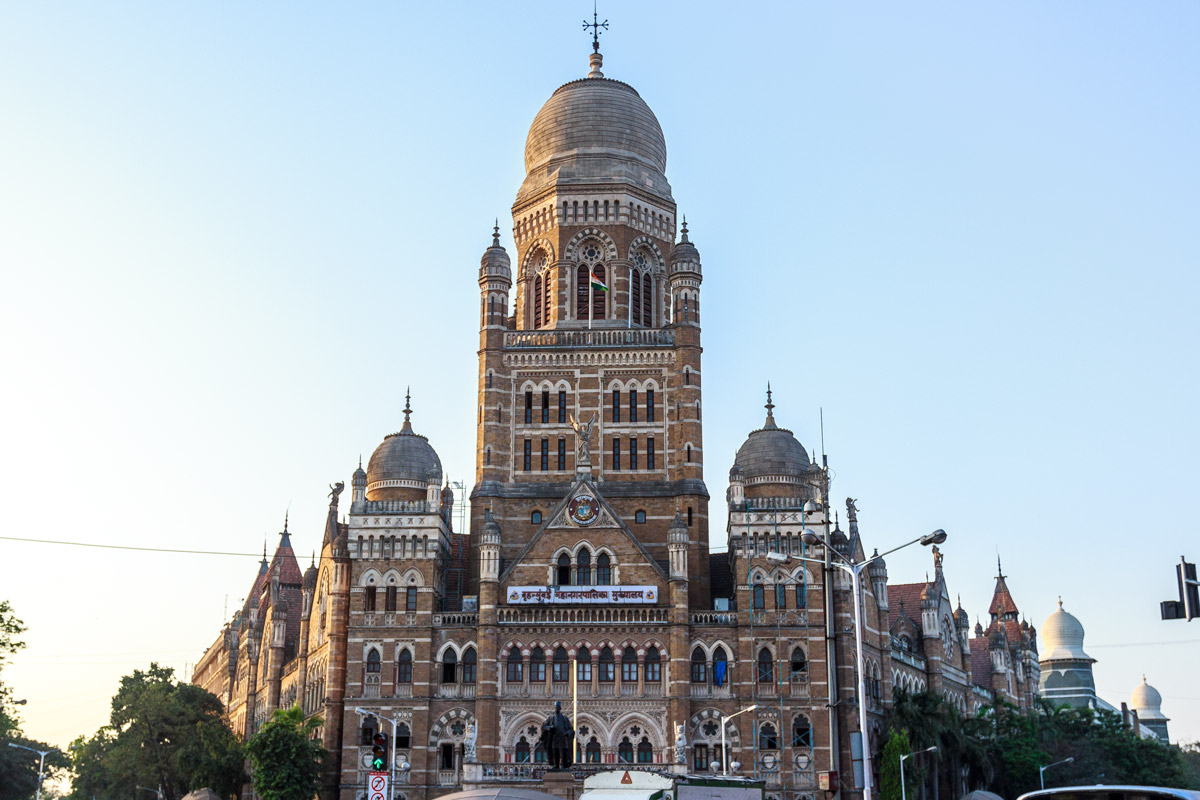
Classic English architecture: the former army and navy building. It can easily be mistaken for London. All three projects were executed by the same architect — British Frederick William Stevens.

Catholic Church of Mary on the Hill.
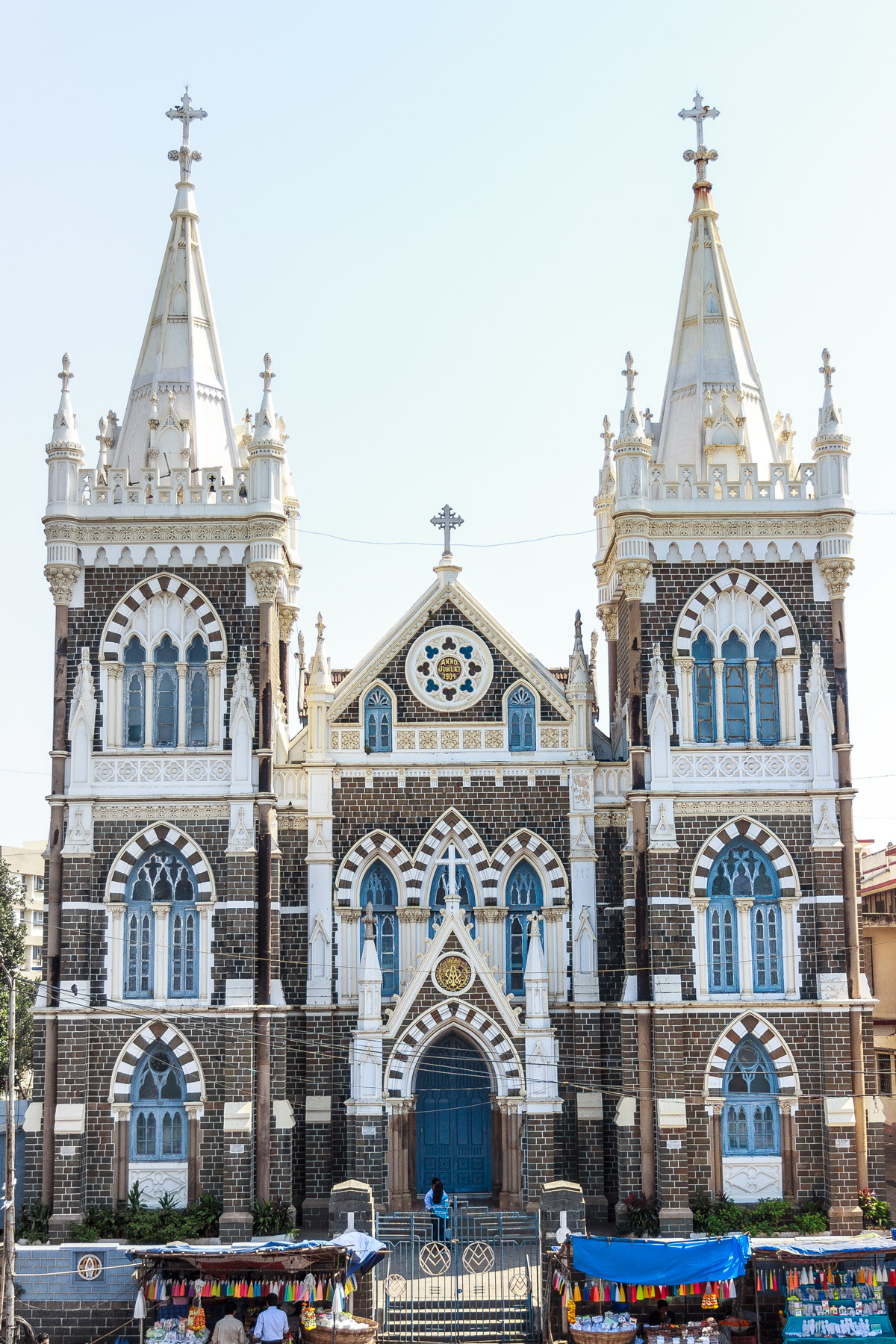

Library.
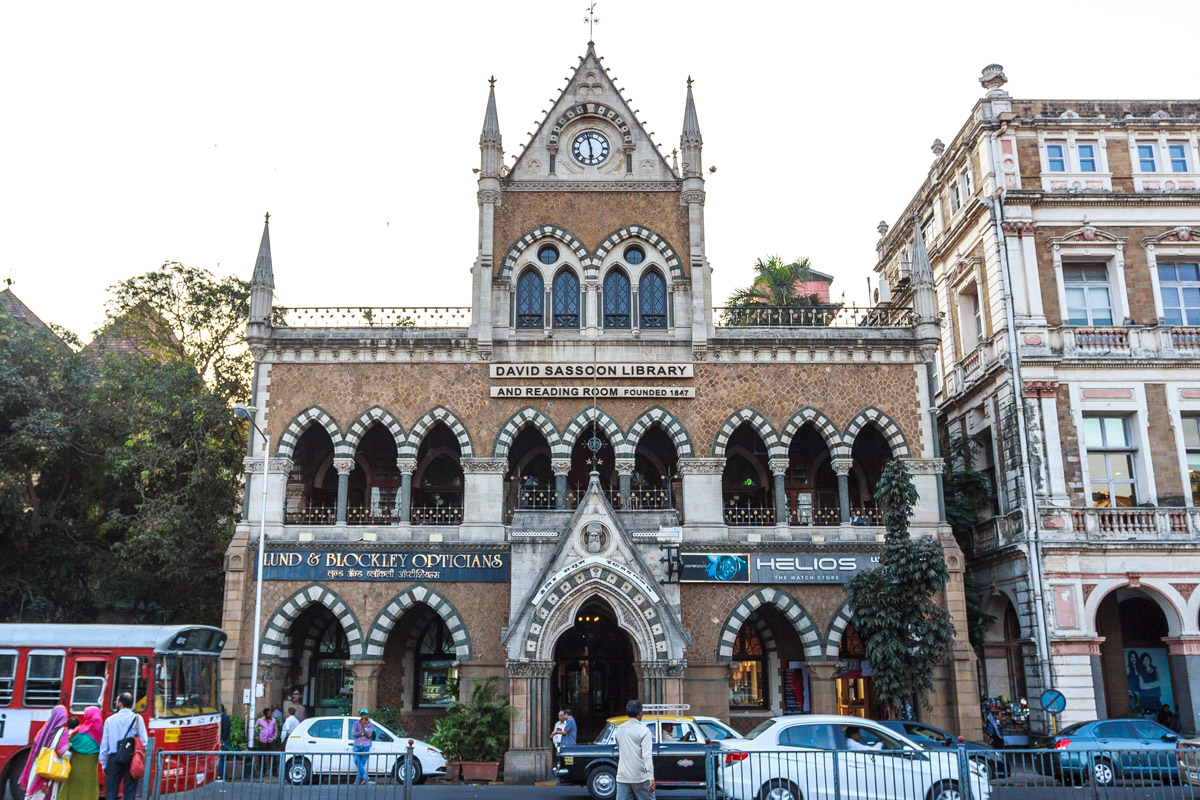
One of the most famous buildings in Bombay is the Taj Mahal Palace Hotel. It is claimed that the building was merely completed by the British architect William Chambers, while the original design was developed by an Indian architect named Sitaram Khanderao Vaidya.

It’s hard to believe, of course. An incredible architectural style.
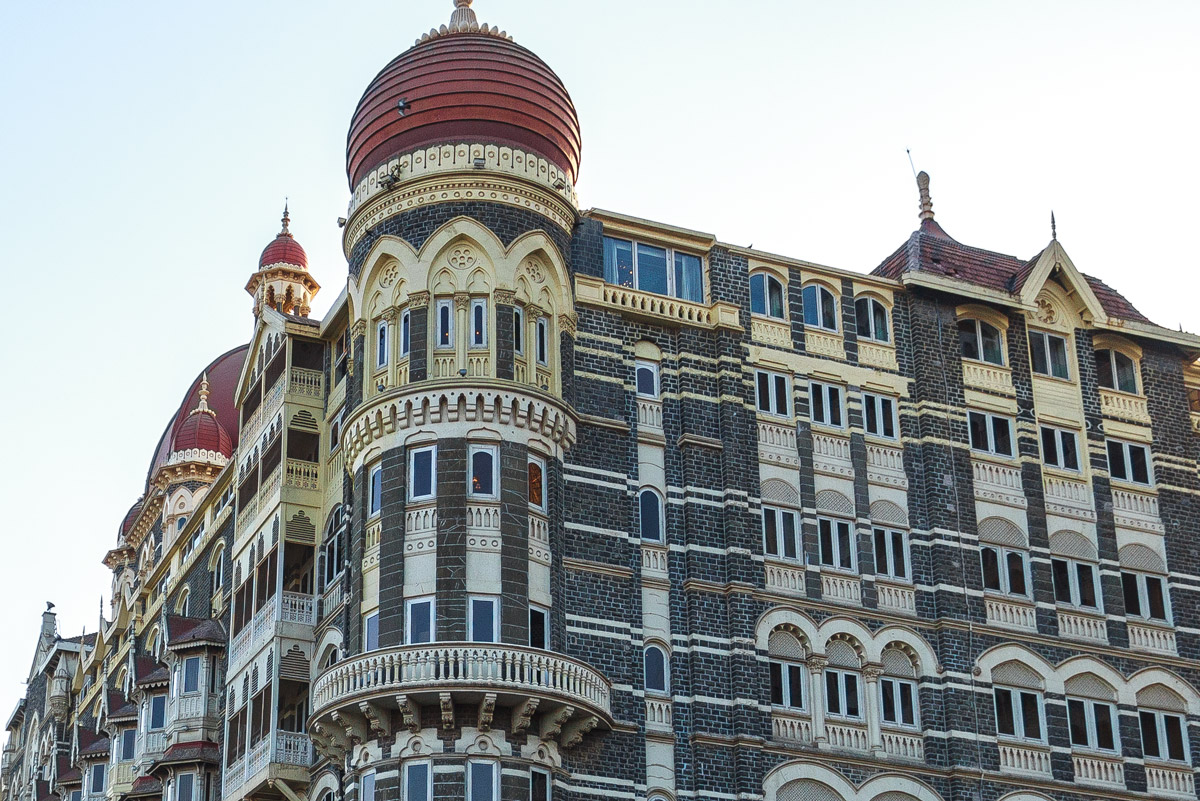
This is what the hotel looks like on the inside. How much can such a room cost? In New York or London, prices would be astronomical. Here, however, the price for a double room starts at ten thousand rubles per night — quite affordable. The most expensive “grand” room with a sea view will cost around eighty thousand per night. But even this is a mere pittance compared to many famous hotels where prices can reach several hundred thousand.
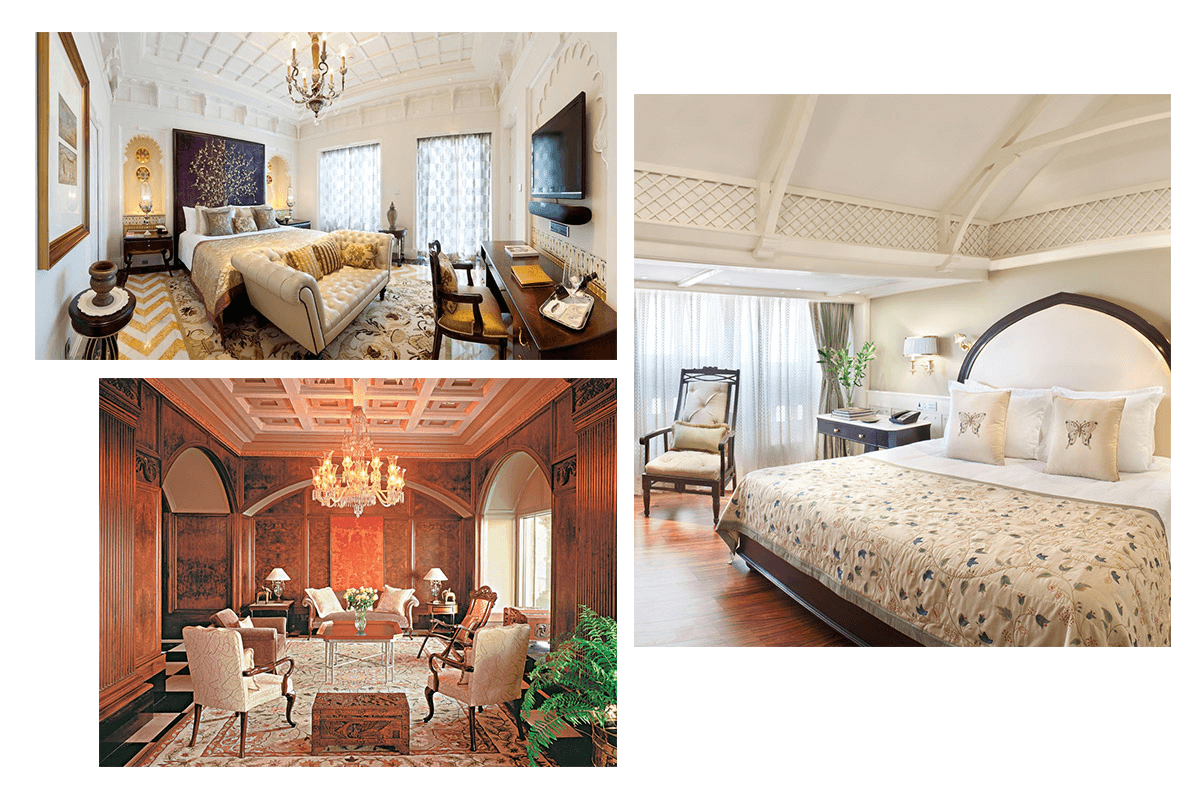
The hotel is located on the shore, next to the historic Bombay port and the Gateway of India monument. The architect is George Wittet, a Scot.

The arch was built in honor of the visit of King George V and Queen Mary to Bombay in 1911. Although the style of the monument is purely Indian, there is somehow a trace of British influence in it. In any case, only the English could have made such an inscription.
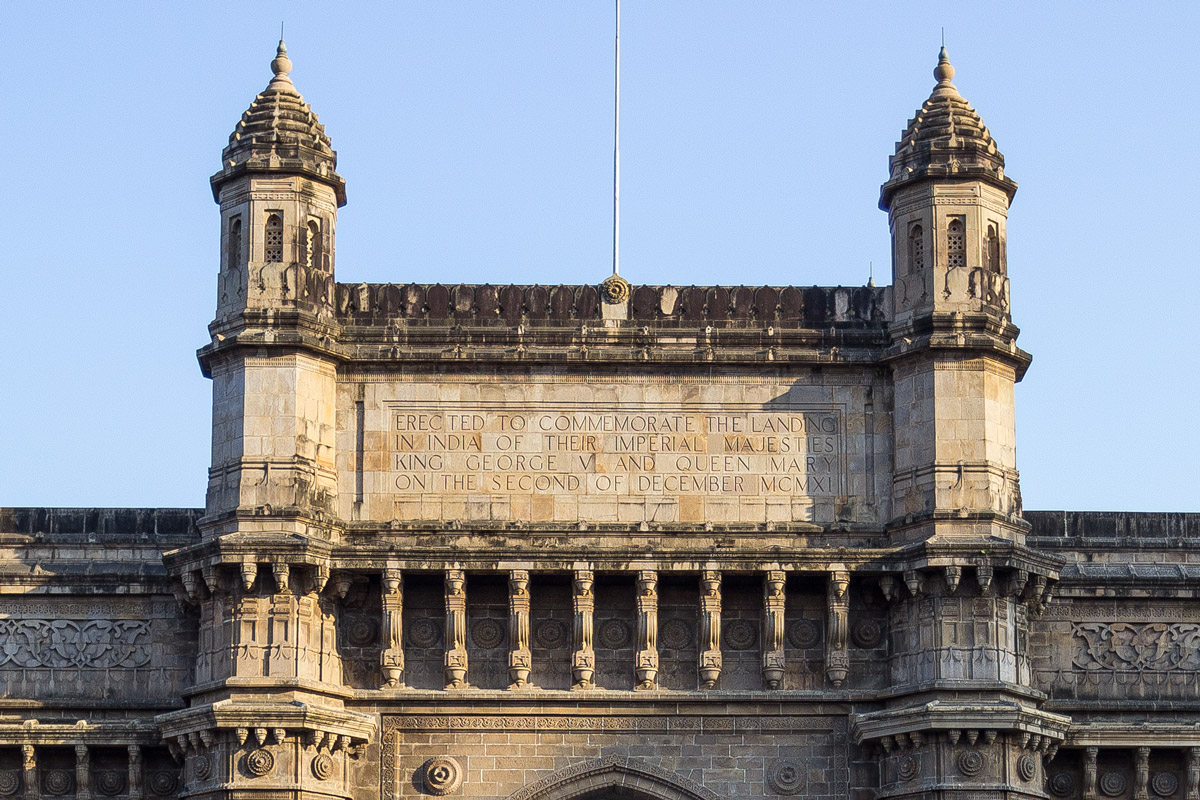
Beautiful, wide streets and intersections.

This is not at all like the rest of India.
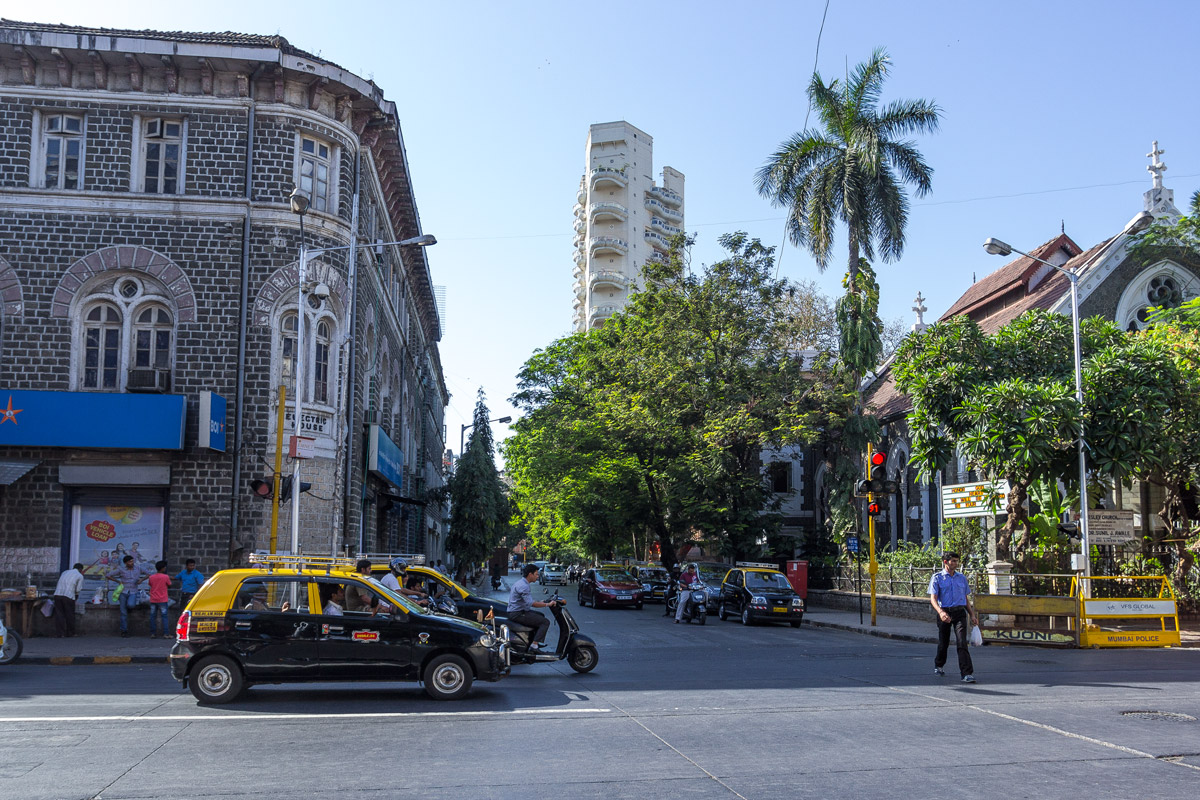
Maybe it’s not Europe everywhere here.
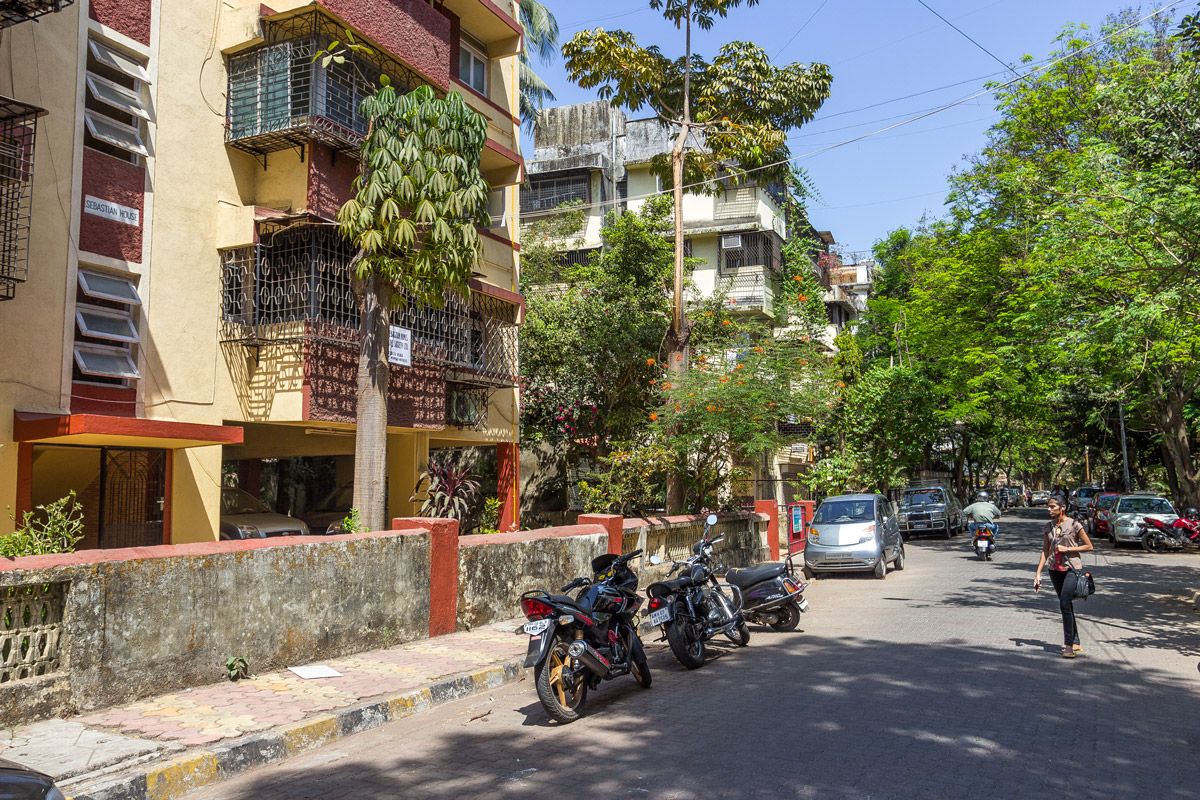
But Bombay is cleaner and more beautiful than other Indian cities by a large margin.



In the city center, you can only find taxis and buses. Cycle rickshaws and tuk-tuks are prohibited from traveling for many kilometers. This has allowed the city to eliminate traffic jams, at least in the center.

The Bombay bus is double-decker! Just like in London, but an older model and with its own color scheme.


No matter how beautiful the architecture is and how convenient the public transportation may be, it seems that Indians cannot be dissuaded from the habit of occupying the entire roadway.

People are returning from work. Whether there are not enough sidewalks or too many people, but half of the road is crowded with pedestrians.

No, it’s still a cultural habit. Look: the sidewalk on the left is completely clear, yet people still step onto the roadway.

The Bombay beach is deserted. Usually, there are many more people here.

Of course, a European is unlikely to want to swim here. The water is heavily polluted, and there are no amenities on the beach itself. There are some stray dogs roaming around as well.

Although there are quite nice houses along the coast.

Somewhere near the city center, a narrow artificial causeway branches off from the beach, leading to a small island. Every evening, massive crowds of Muslims gather here.

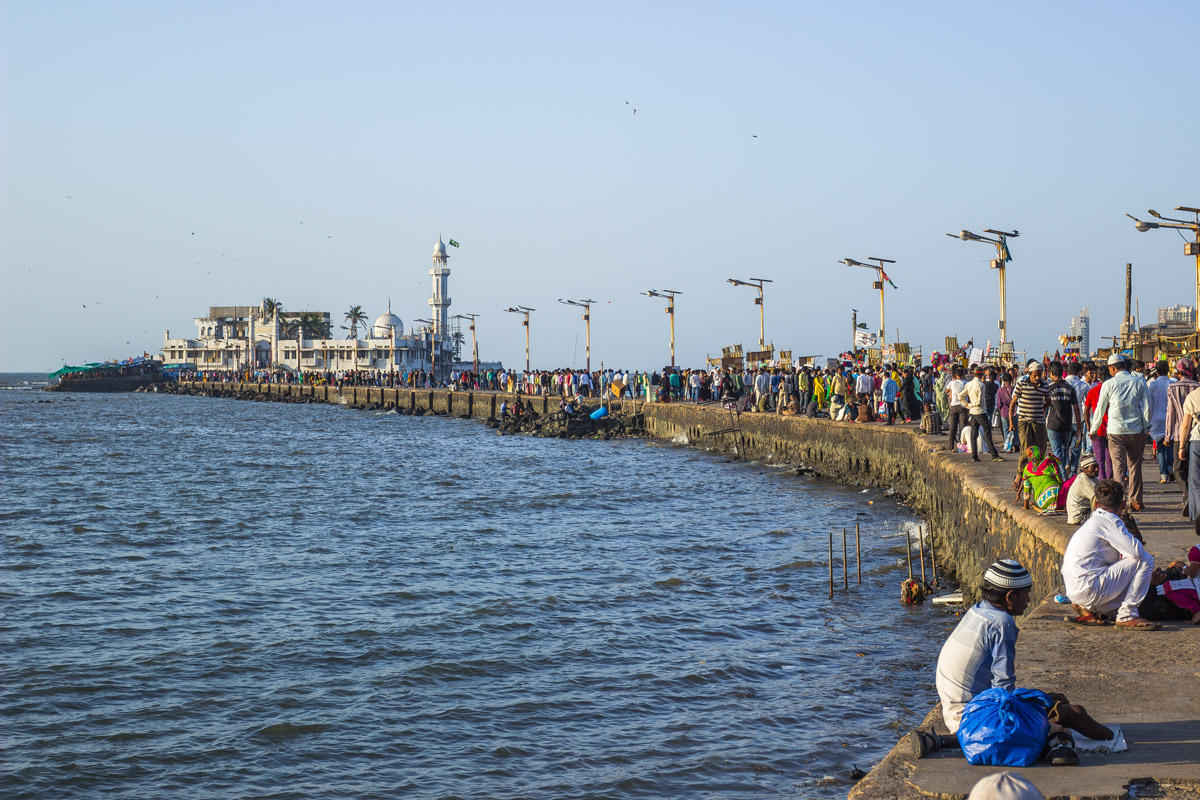
On the island, there is the Haji Ali Mosque. It is a very old building, constructed in the year 1431 by a wealthy Muslim merchant.

The place is quite something, indeed. A flock of crows constantly flies over the mosque.
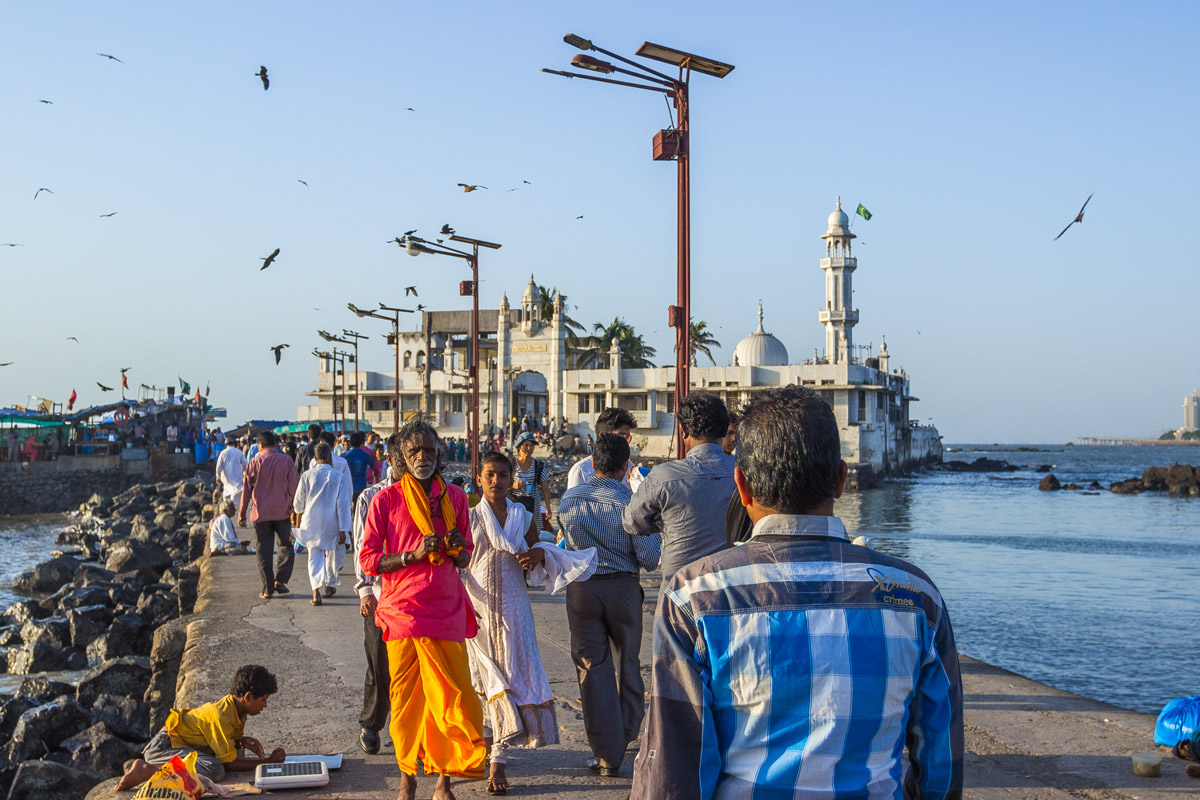
Certainly, it’s not the minarets or Islam that attract them, but the piles of garbage that litter the entire mosque. The entire road from the beginning is covered in filth.
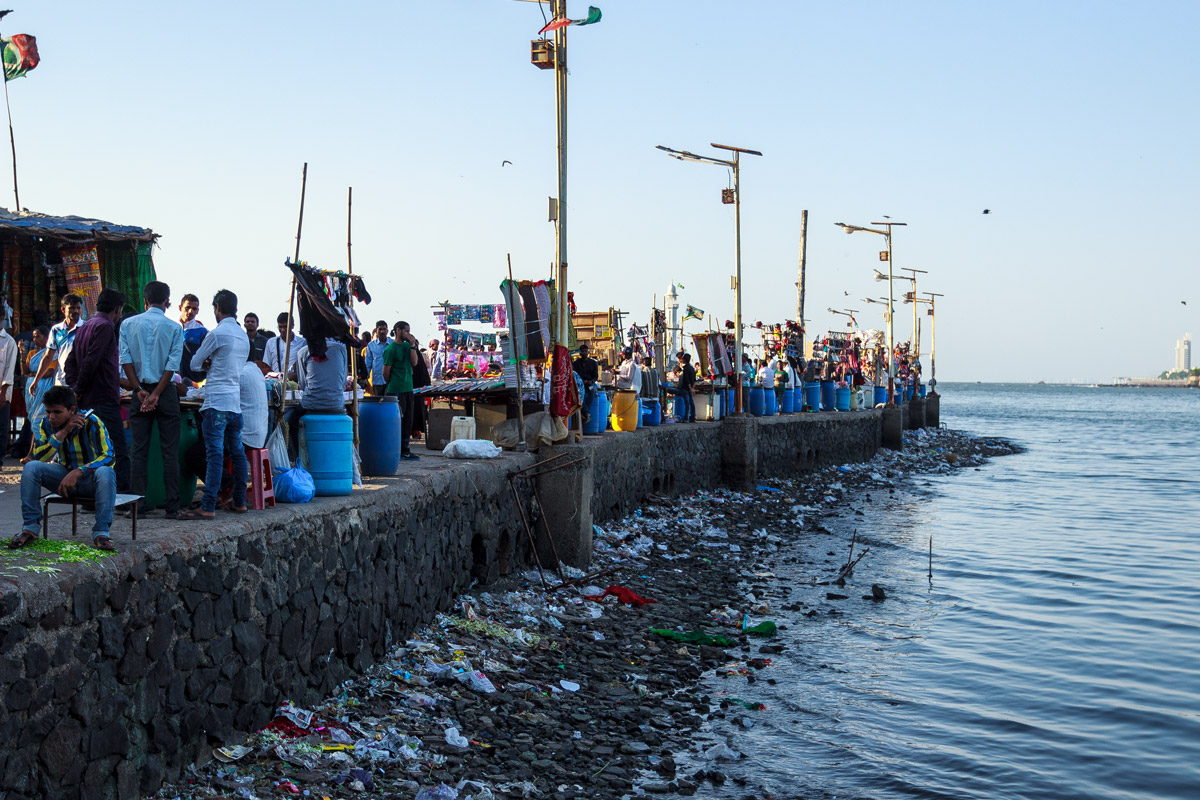
And up to the walls of the mosque. Everything is in garbage. Mostly plastic plates are scattered around. Someone enjoys eating deliciously before the evening prayer.

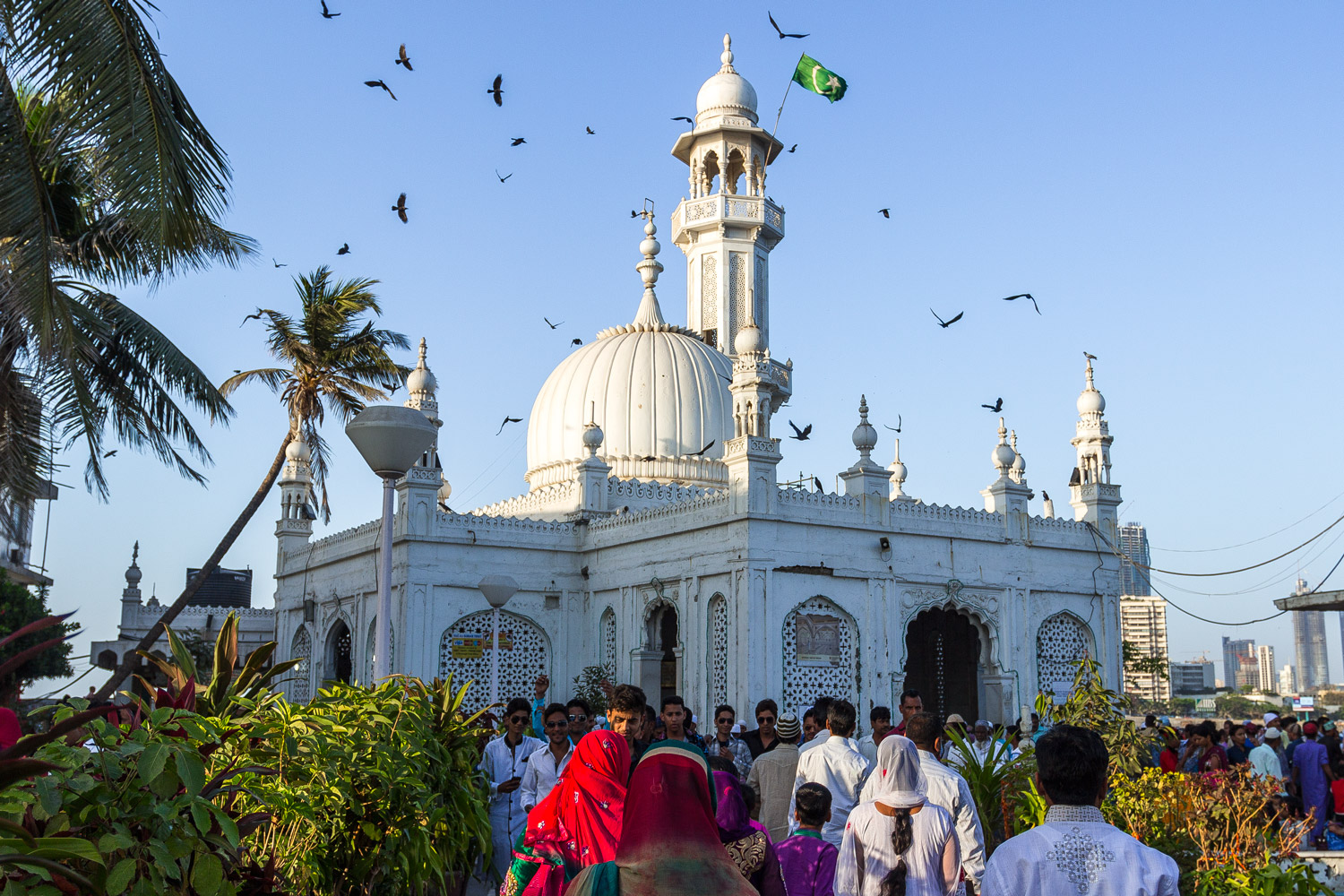
From the island, there is a great view of the skyscrapers of Mumbai.
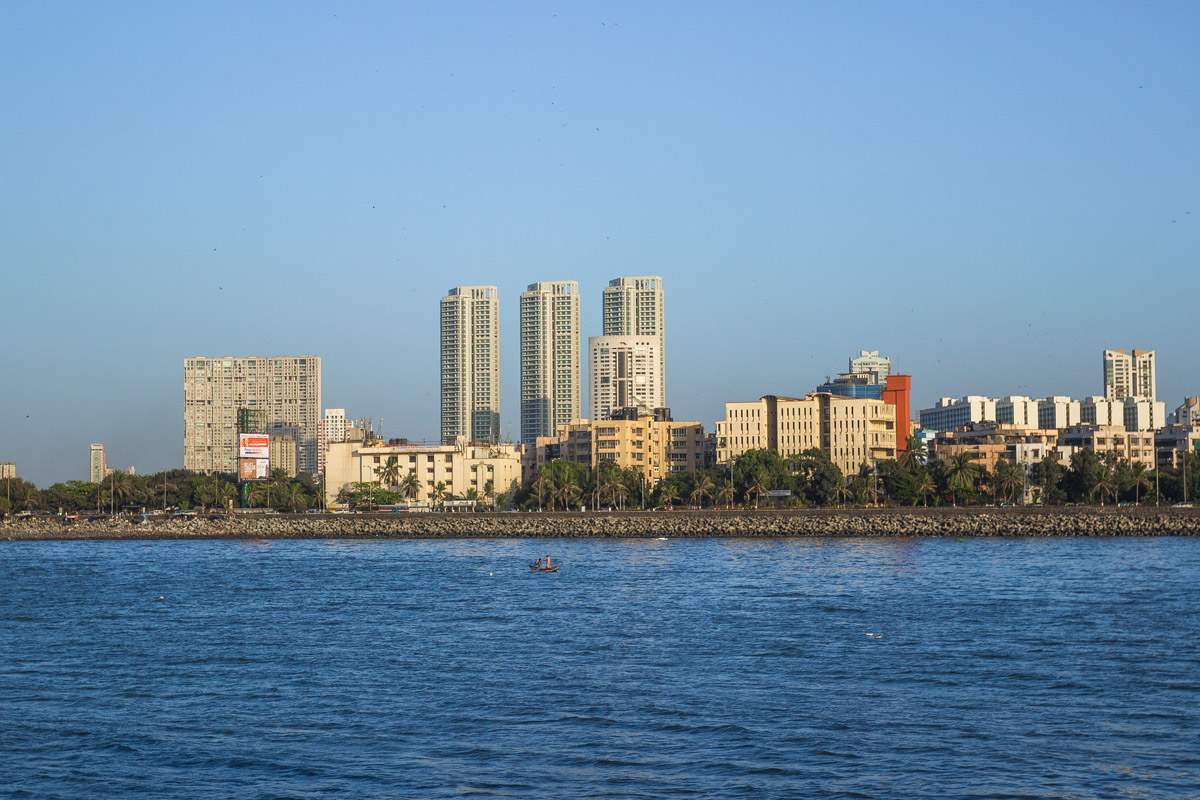
Elite residential buildings with 45 floors. These three buildings are located very close to Dobi Ghat.

The cylindrical building is the Nehru Science Center. Lectures, exhibitions, and training are conducted there. There is a library and a planetarium. However, there is nothing coherent mentioned on the center’s website.

The tallest skyscraper in India is 254 meters high with 61 floors.

Let’s move away from the city center and see how things are in other parts of the city. In principle, as soon as you turn “off course” from the main central streets, typical India begins.

Residential area near the port.

Huts.


The port itself smells unbearably of fish, and there are also tough guys hanging out here in the hull of an abandoned boat.


The center of Mumbai is connected to other districts through a suburban train system and a highway. One needs to understand the city’s geography here — it is incredibly elongated, with all major workplaces in the southern part and residential areas in the north. Every morning and evening, a huge number of people rush from one part of Mumbai to another.
There are only two options: either take the train or go by car. Both routes are exceptionally overcrowded. It’s better not to travel around the city during rush hours at all. The roads are unreasonably congested, and the Mumbai local train is so packed with people that they cannot fit inside the train cars and end up hanging out of the doors.
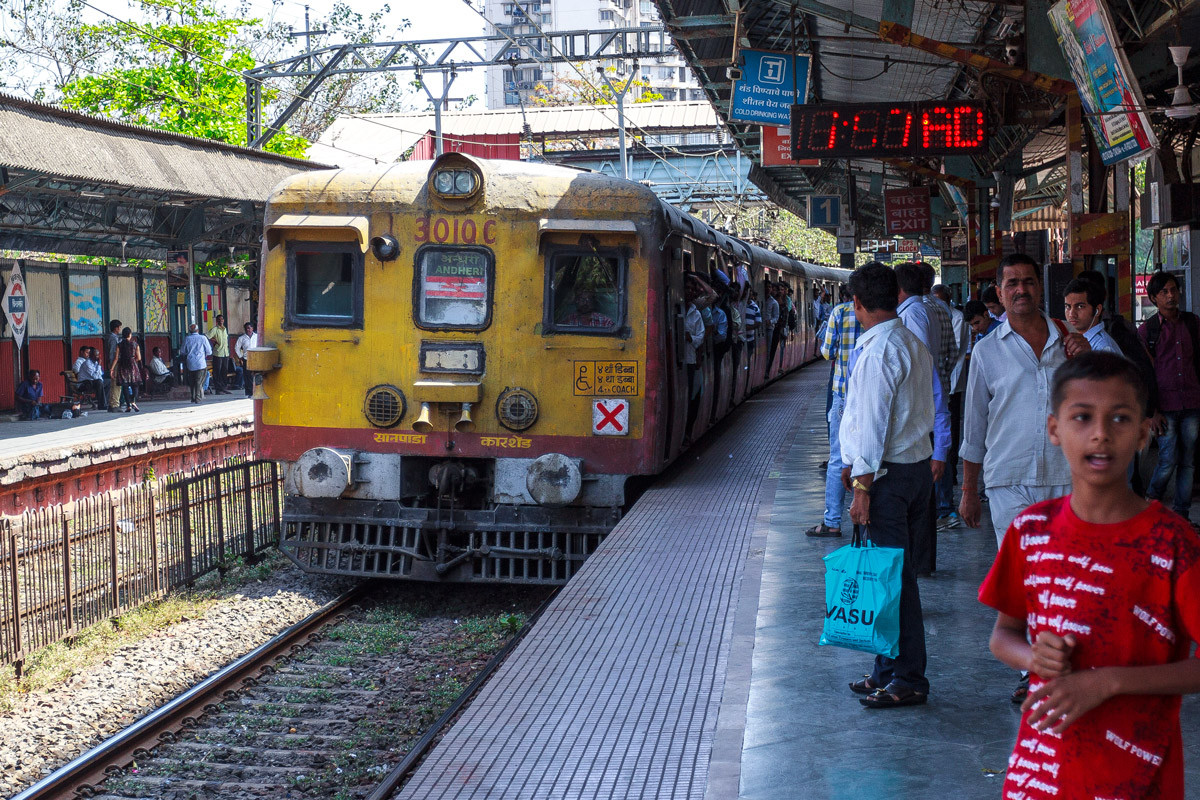
The train cars themselves are quite decent, and the fare is inexpensive — around 10 rupees from one end of the city to the other.

But in the evening, something extraordinary happens. The doors of the train cars intentionally do not close, and the train stops at stations for just a few seconds. As a result, Indians jump into the moving train, leaping into overcrowded doorways, grabbing onto handrails, and often remain hanging outside until they are pushed inside at the next station.
If a foreigner is fortunate enough to travel on the Mumbai local train during rush hours, it will be a serious challenge. Even the crowded trains in the Moscow suburbs cannot compare to the madness of the Indian crowd. However, there are many helpful people here who, upon seeing you, will always assist you in getting off at the right station. One Indian even pushed people around me so that I could exit properly.
On the other hand, a journey on the evening local train can turn out to be very entertaining. For instance, you might encounter a whole ensemble within one train car.
In Mumbai, there is also a more modern branch of the surface metro, which currently consists of just a dozen stations and is twice as expensive. However, it is never crowded here, and the trains are clean and modern.

Let’s exit at one of the stations and take a walk through the neighborhoods.

There must be no one who hasn’t seen the photographs of Dharavi, the area where the movie “Slumdog Millionaire” was also filmed. Is the rest of the city really that terrible?

This is the Chunabhatti neighborhood. It is located on a small hill not far from Dharavi. There is a staircase leading to the impoverished streets, carved between houses made from leftover cement.
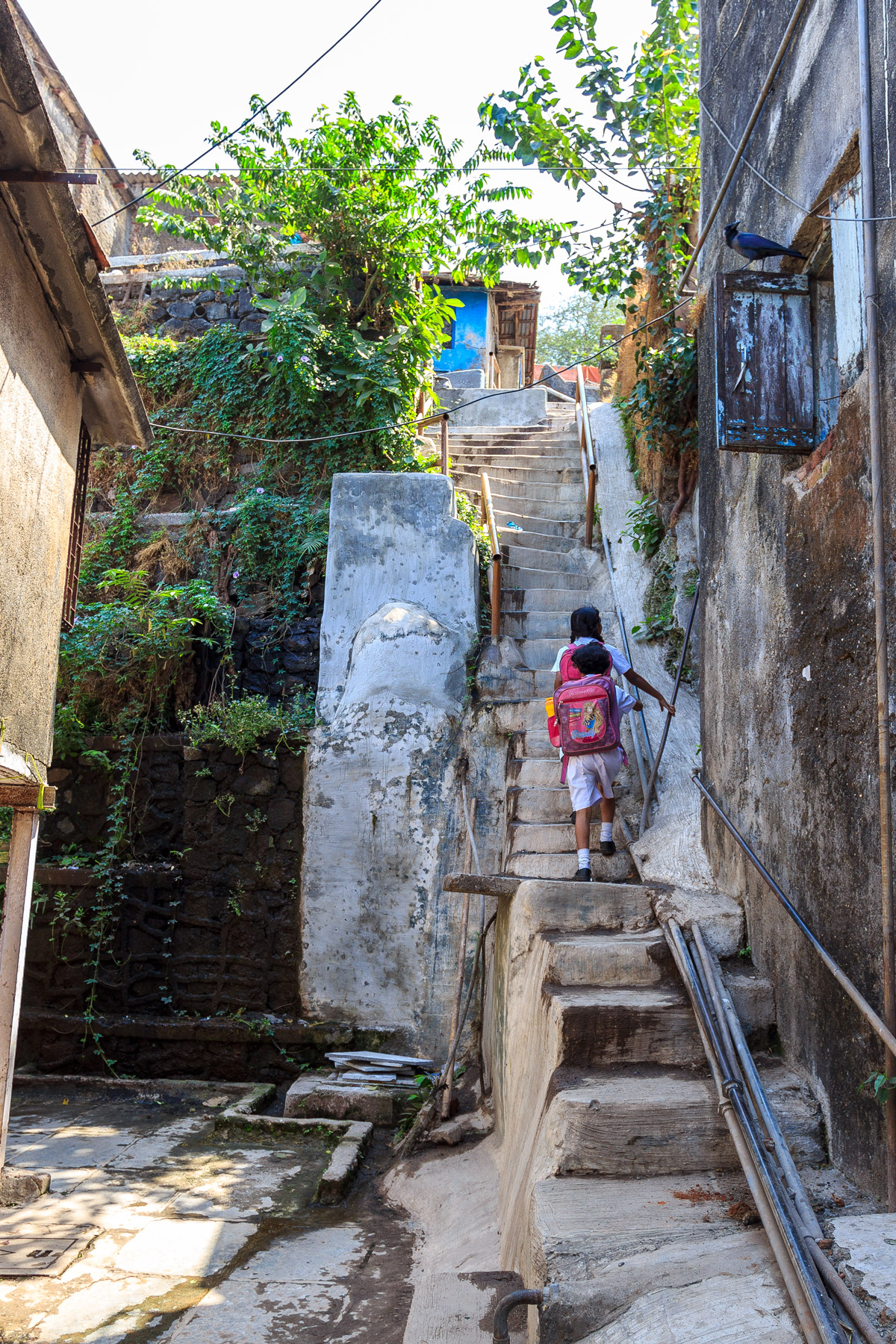
Beautiful view. Self-built roofs in the foreground, affordable panel housing, and upscale construction in the distance.
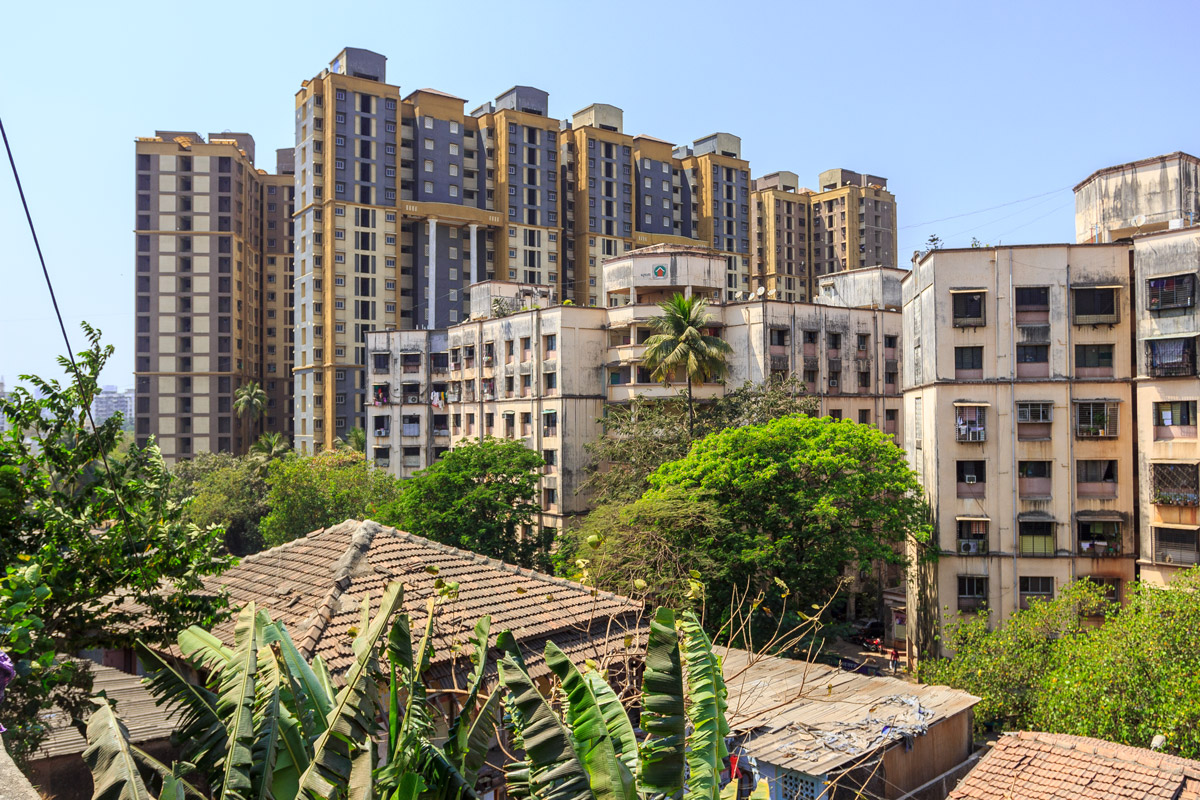
Hibari with narrow streets, squeezed between the slope of the hill. Water pipes are connected to the houses, supplying water to the residents.

The corrugated roof leaks during rain, so it is covered with tarpaulin and held down with bricks to protect it from the wind.

Wonderful balconies with a view of the city.


Streets.


Children are returning from school. They are dressed very decently, it is worth noting.

Garbage mountain. If my memory serves me right, Muslim neighborhoods are located at the top of the hill.
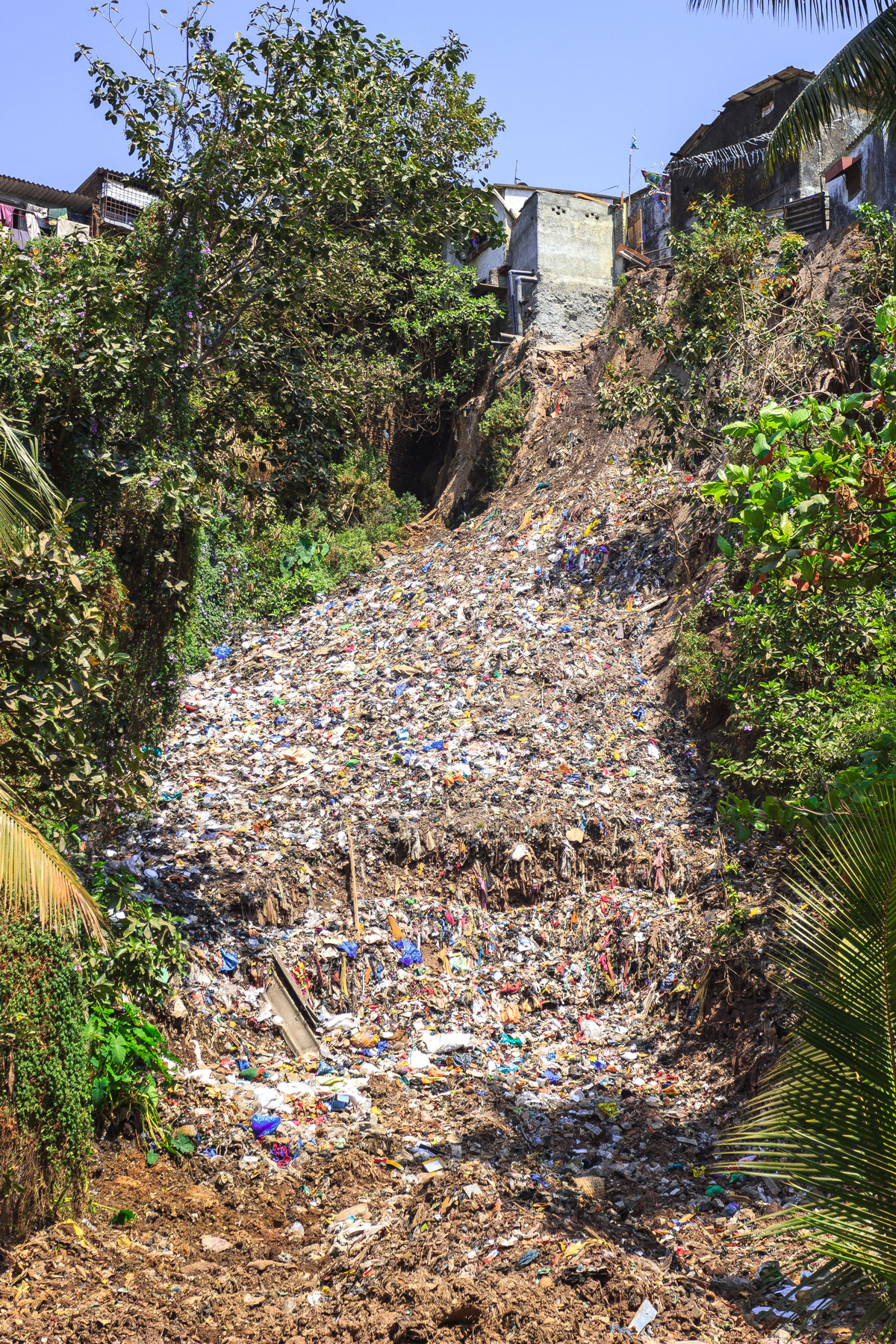
Of course, it is difficult to live here.


But if you walk a couple of kilometers, the scene is completely different. Here, an excellent children’s playground appears.

And here is simply magnificent, picturesque, wide street.

The sidewalk paved with tiles, absence of traffic jams, trees along the road — this is not the city center at all, we are still near Dharavi.
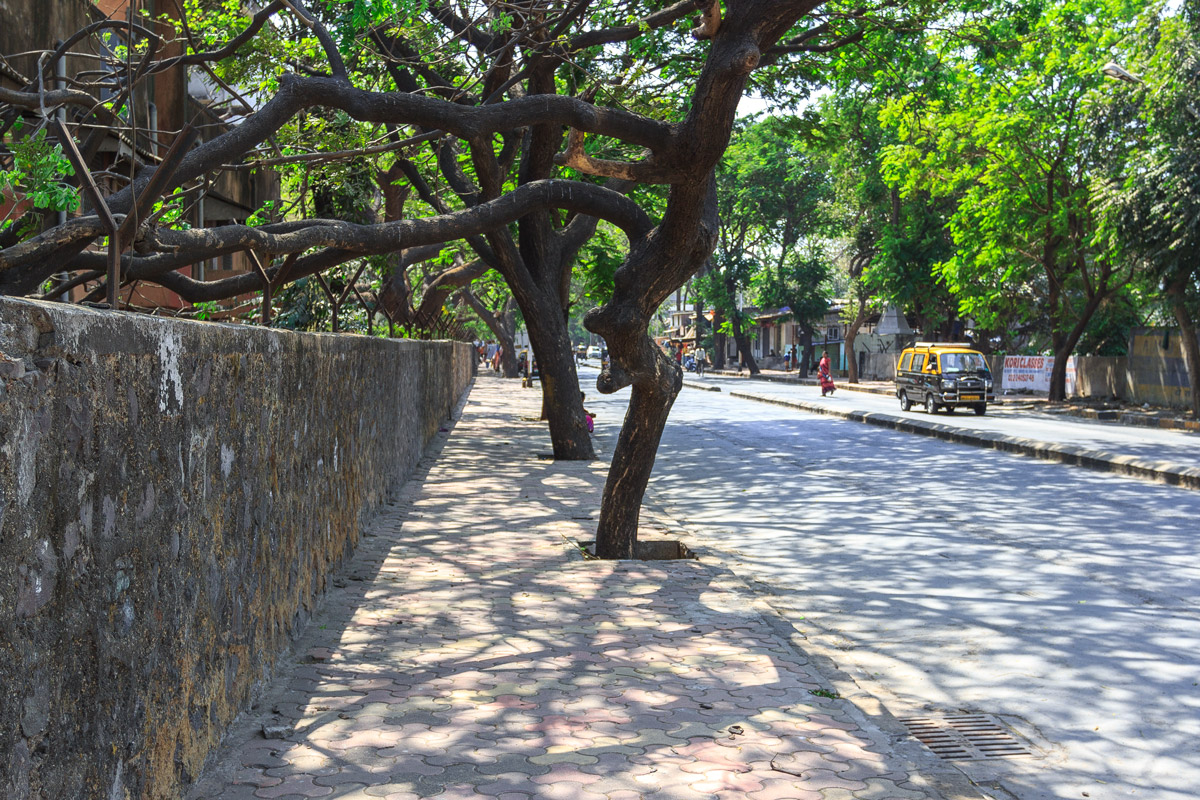
These are the courtyards of those panel buildings that could be observed from the hill. Although the buildings look unattractive and dirty, the surrounding area is quite clean, and I’m sure the apartments are no worse than Moscow’s Khrushchev-era housing.

Wonderful courtyard.


Entrance. In India, they don’t know how to make pleasant entrances at all. There is neither a proper canopy nor a porch, nor a stairwell: right after the door with blinds, apartment doors begin.

Although the buildings may look unattractive, covered in black residue and slightly crumbling, these high-rise buildings are perfectly suitable for living.
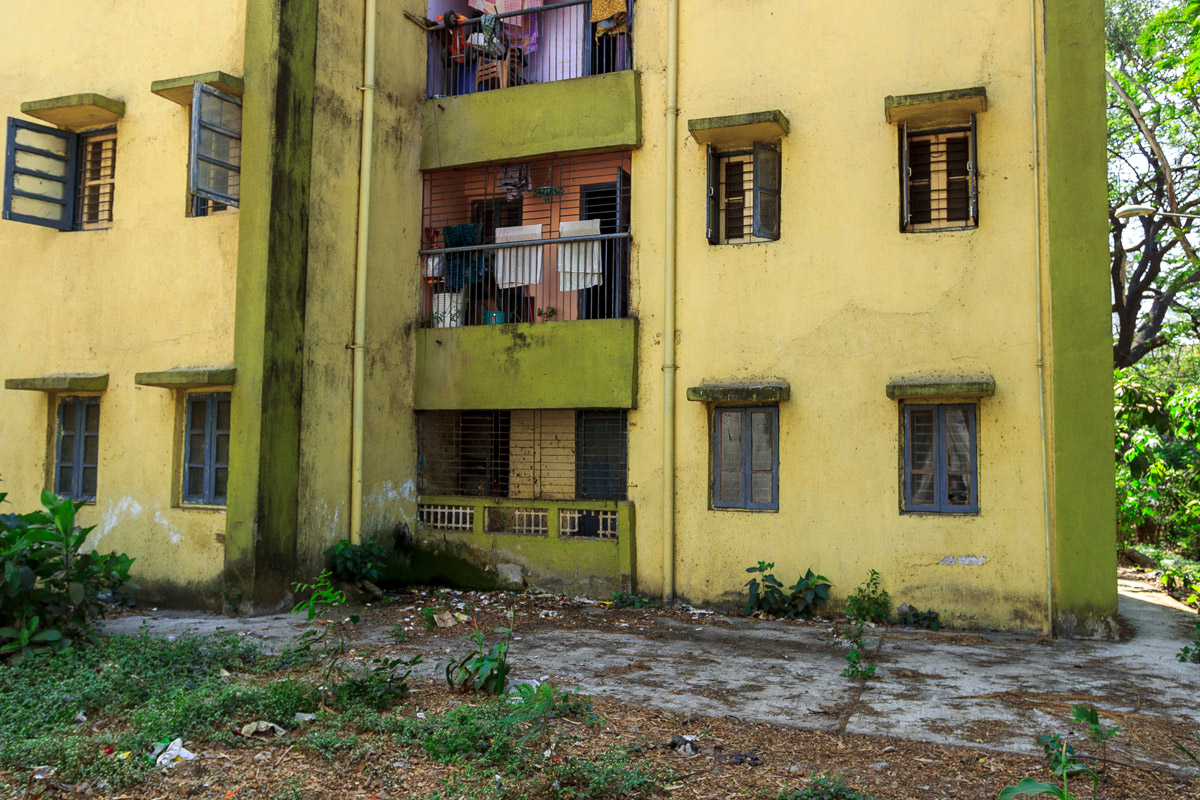
A little further away are the poorer neighborhoods. But even they don’t look like the majority of Delhi. If it were Delhi, the street would be completely congested with auto-rickshaws. But in Mumbai, everything is very decent.

Another street. Here begins a row of three-story houses.

As expected, the ground floor is occupied by a family business.

The sellers in these shops. They sell all sorts of small items. Colorful ribbons — bags of cheap chewing gum. It is sold everywhere. Indians love to chew betel leaves and then spit out brownish remains everywhere. Besides betel, they sell water, chips, chewing gum, cigarettes, matches, and various snacks. The assortment in all the shops is roughly the same.

Rarely does anyone dare to leave windows without grilles. In this house, there are two such windows that caught my attention.
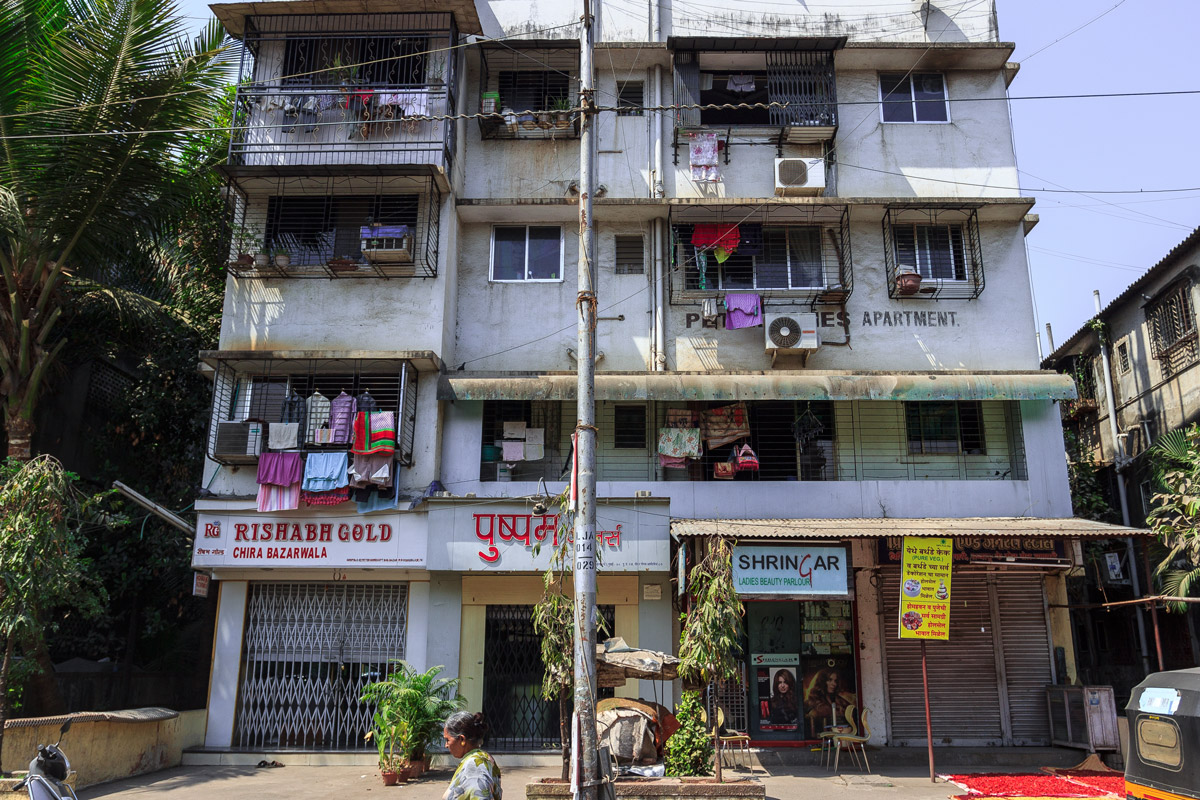
A narrower street.

Houses blackened by mold.

A typical Indian jumble: a bus stop, houses, a cart, broken sidewalks.

It is very difficult to walk on the sidewalks. They are often damaged and cluttered with something.

Or by someone.


Schoolchildren.

Taxi driver. How Indians love to take photos, after all.

We are approaching Dharavi smoothly. Along the main street, there are the same type of houses as in the rest of the city’s neighborhoods.
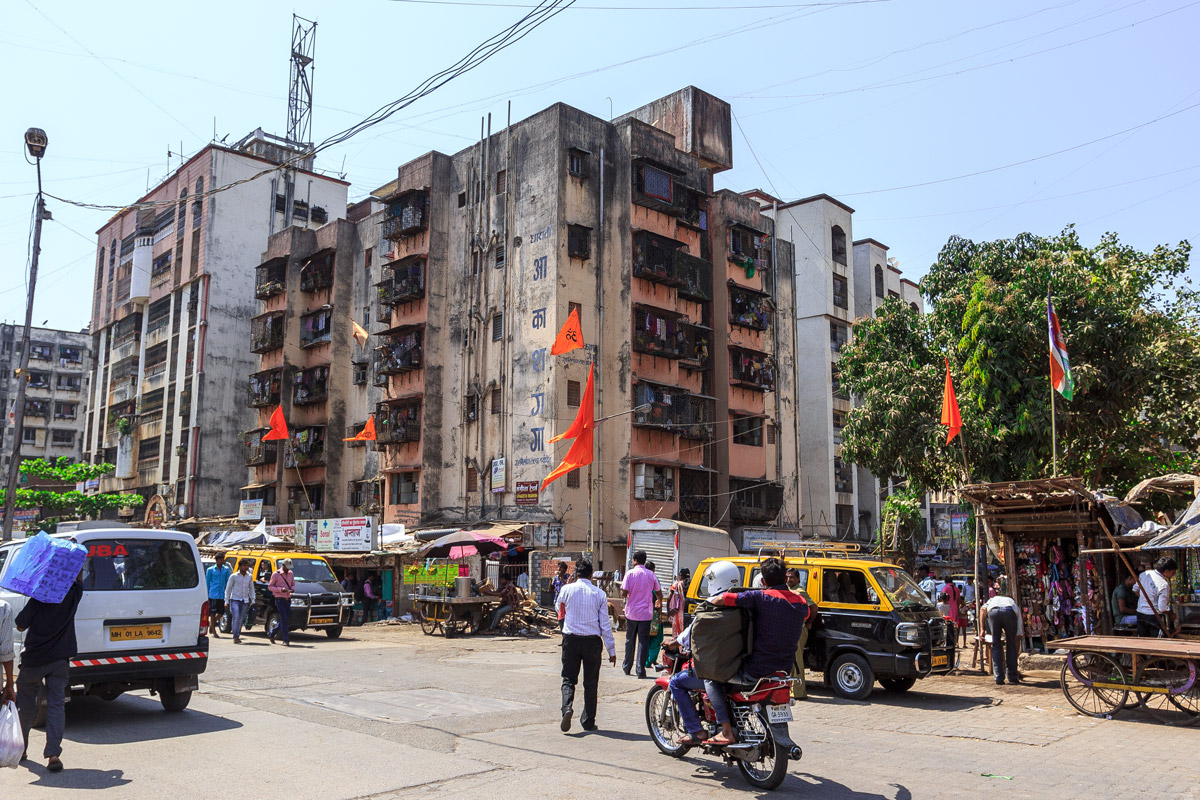

The same type of shops line the houses.

Let’s turn into the alleys of the slums.

No significant differences. All of this can be seen in any other part of Mumbai, not to mention Delhi.

The corners. People live here in extreme poverty, but they still try to take care of themselves: dressed decently, and there is no litter on the streets.

There are, of course, a couple of places in all the slums where there are truly mountains of garbage, and the housing is monstrously bad.

I can’t imagine how one can live here.
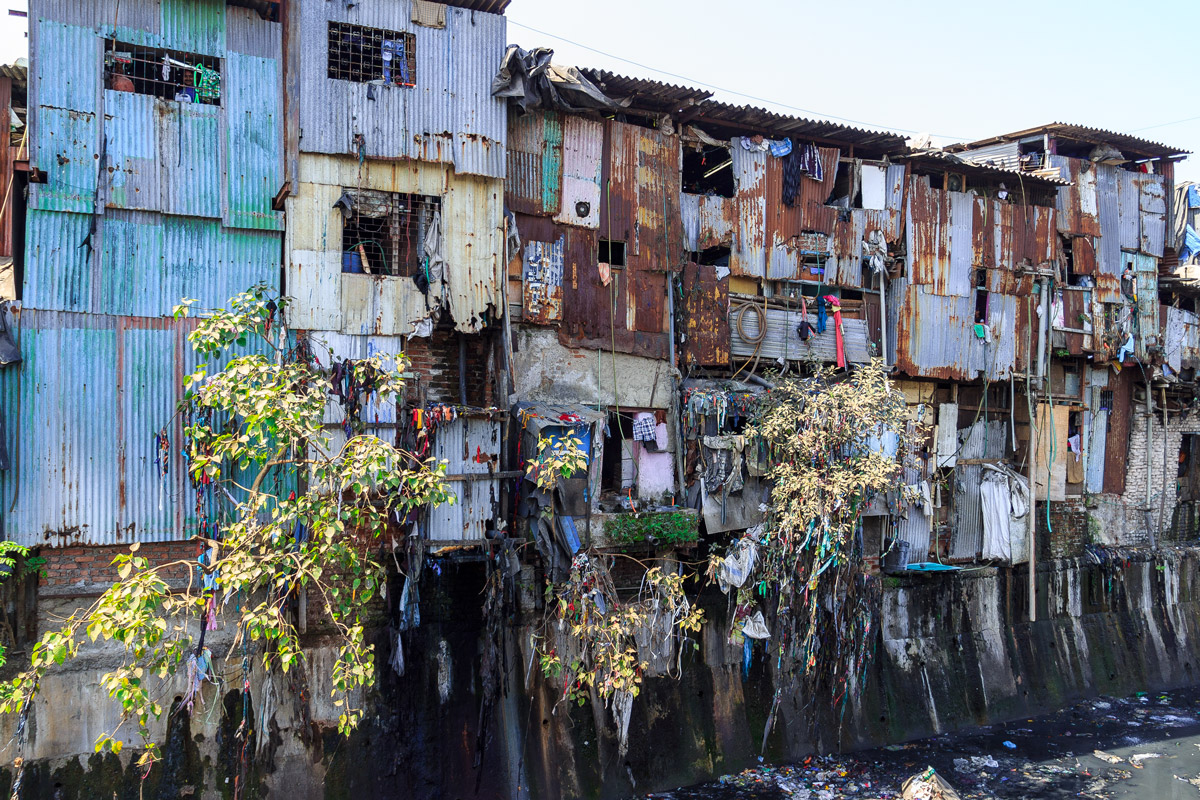
A cluster of houses made from former shipping containers. Windows are cut with an angle grinder, secured with iron grilles. Trees grow right out of the houses. Beneath the houses flows a foul-smelling river where waste is discharged and garbage is dumped.



The famous pipes. Children ran on them in the movie “Slumdog Millionaire.”
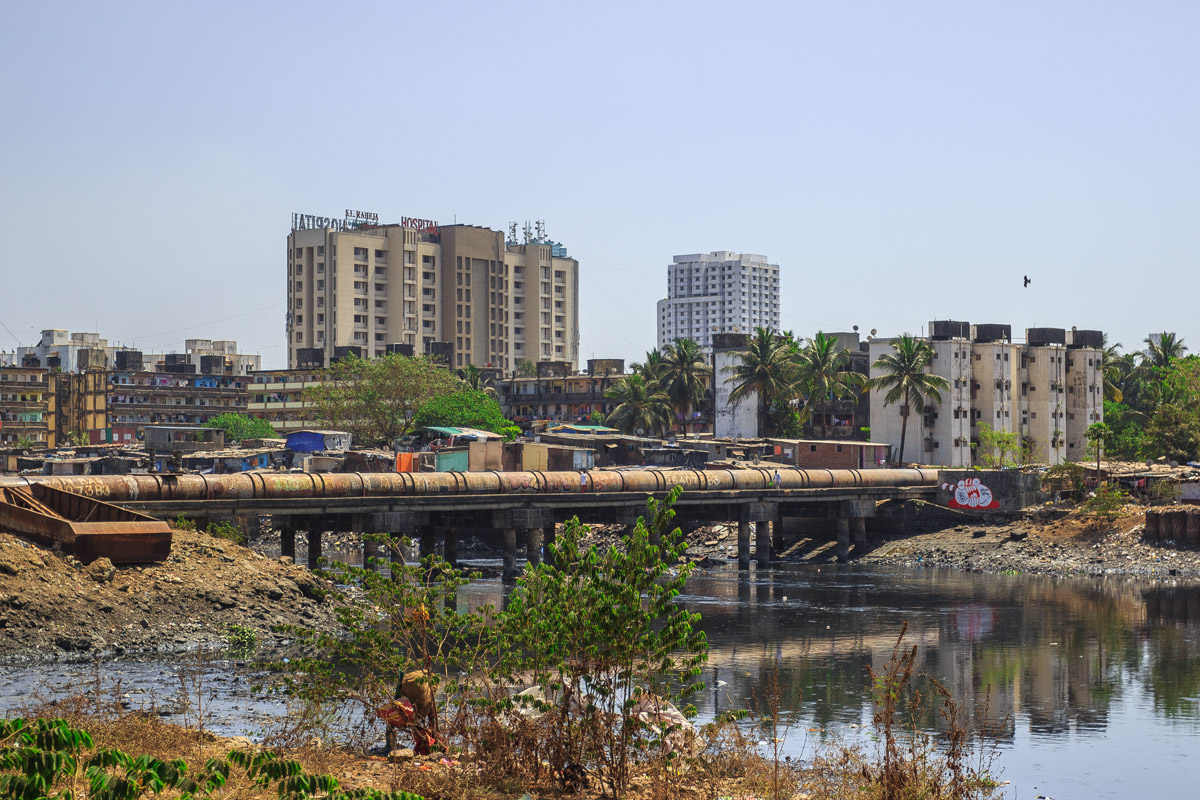
It is said that local residents like to use these pipes as toilets for defecation. The pipe is smeared with neat clumps of excrement along its length. Searching for the exact location seemed doubtful.

Piles of garbage on the riverbank. All of this, of course, floats into the sea, which is just a kilometer away. That’s why it’s not advisable to swim at Mumbai beach.

Roofs of the slums.
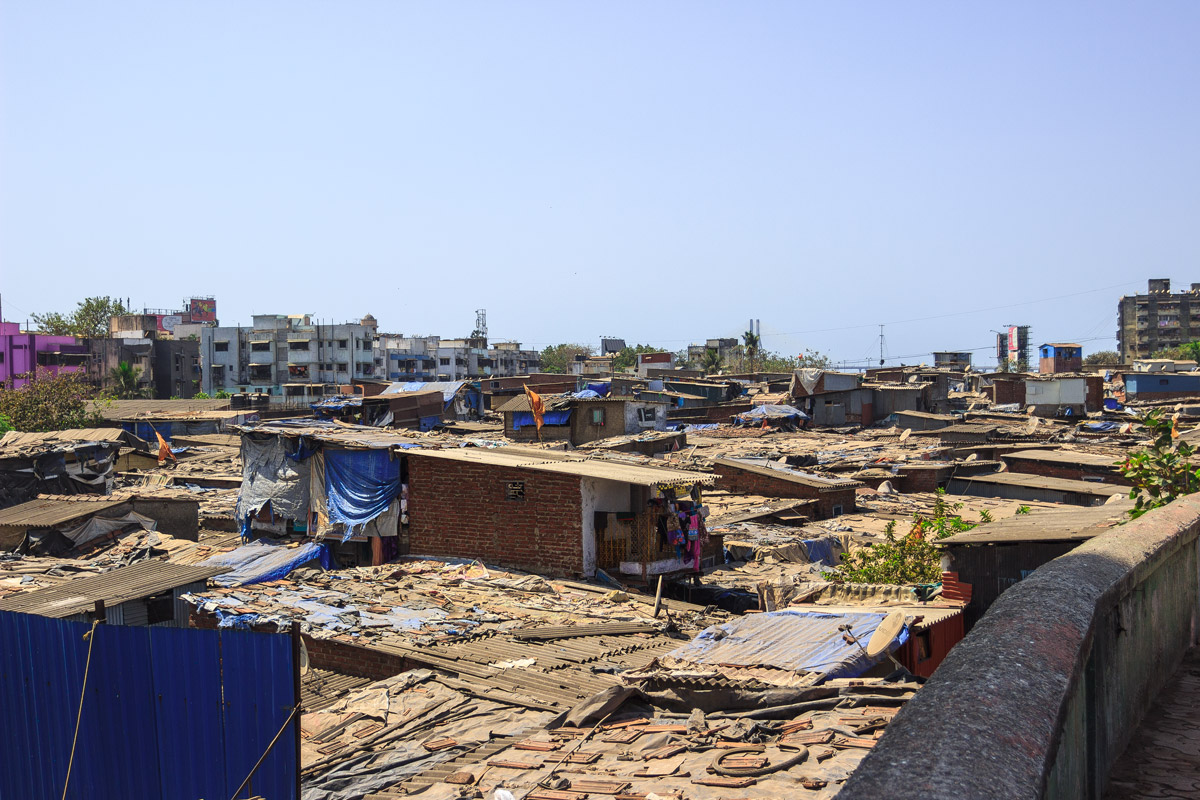
This is how the area looks from the pedestrian bridge leading to the suburban trains.

This is how Dharavi looks on the map. In reality, it is a tiny piece of land in Mumbai, not a gigantic slum. It is completely unclear why this area is referred to as the largest slum in Asia. According to some estimates, there are over a million residents here. However, other data suggest that Dharavi is home to no more than three hundred thousand people.

In one way or another, after the quarters of Delhi, which are not even considered slums, and after the chaos of Varanasi, Dharavi has nothing surprising to offer. Most likely, in the near future, Mumbai will get rid of this area. In its place, a high-speed highway will be built, the bridge for which is already being constructed above the roofs of dilapidated huts, and the residents will be resettled in multi-story “panel buildings” scattered haphazardly throughout the rest of the city.
And most likely the authorities will do this forcibly, just as they are currently forcibly demolishing makeshift tent houses that happen to go beyond their designated boundaries.



